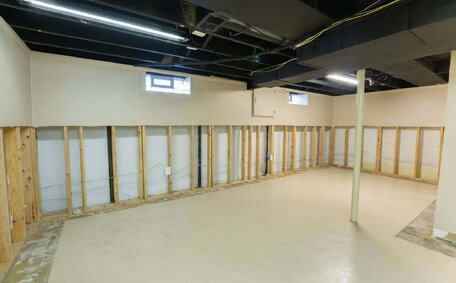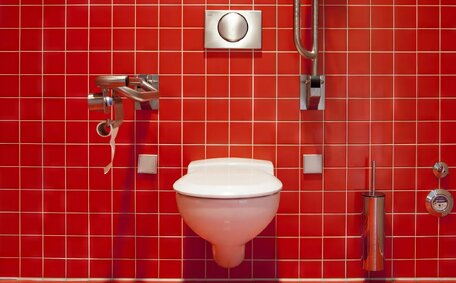Introduction to Relining Pipes with Complex Bends and Angles
Using cutting-edge trenchless technology, pipe relining allows for efficient repair of damaged pipes without significant excavation. This method involves the insertion of a malleable epoxy resin liner into storm water pipes, creating a smooth, watertight repair.
Unlike traditional methods, pipe lining enables plumbers to renew your pipelines with multiple bends, elbows, offsets and challenging configurations that would typically require extensive excavation. The durable liner navigates narrow turns and complex angles with ease, enabling optimal repair of damaged conduits.
Pipe relining surpasses traditional pipe replacement, fixing broken pipes quickly with minimal excavation and property disruption. Moreover, it reduces restoration costs and is eco-friendlier, saving energy and resources.
The seamless epoxy coating adheres to the inner surface, seals cracks, holes and blockages, and restores structural integrity and flow capacity to your home’s drain pipe. It halts leaks, sewer infiltration and tree root intrusion, ensuring durable results. CCTV inspection before and after the relining ensures the quality of the work.
In brief, pipe rehabilitation technology offers a less invasive and more versatile alternative to conventional pipe replacement, effectively renewing pipes of any location or shape. It eliminates the need to dig up and replace complex pipe networks, and to make sure your property is preserved, it’s ideal where access is limited.
Advantages of Pipe Relining Over Replacement for Complex Pipes
Drain repair through drain pipe relining offers numerous advantages over traditional replacement when dealing with complex pipe configurations:
- Minimal excavation - No need to dig trenches throughout the property.
- Speed - CIPP relining rapidly creates a new seamless pipe within the old one, significantly reducing repair time and disruption compared to total replacement.
- Versatility - Epoxy lining material can flex and bend to accommodate angles, offsets and tight radiuses.
Trenchless Pipe Relining Methods for Challenging Pipe Configurations
There are two primary trenchless methods employed for renewing sewer lines with complex bends and angles:
- Inversion - This involves inserting a resin-saturated felt liner into the damaged pipe and using water or air pressure to invert it like a sock. The liner seamlessly morphs into a replacement for the old conduit, addressing the eastern suburbs’ needs and was very proficient at curving around bends and corners.
- Pull-in-Place - This process sees a resin-impregnated liner, tailored for conventional pipe systems, hauled and then pulled into place within the existing pipeline. The liner hardens and sets in place, forming a new pipe within old one.
Both methods guarantee new seamless internal linings that allow the flexible material to navigate intricate pipe paths smoothly. Research and expert opinions confirm that relining can address bends up to 90 degrees, with radii as narrow as 1.5 times the pipe diameter.
These trenchless techniques eliminate the need for extensive excavation or disturbance when dealing with complex pipe layouts. Should you encounter a pipe issue, contact our professionals to see how our minimally invasive method can repair with little landscape or structural impact.
The liner firmly adheres to the original pipe walls, creating a seamless pipe within the old one, preventing defects and future issues. CCTV inspections ensure the integrity and quality of the installation throughout the process.
In summary, local specialists offer efficient and non-invasive pipe relining solutions, including inversion and pull-in-place methods, for intricate pipe networks. The flexible liner can traverse angles and offsets within a plumbing system that would make traditional pipe replacement unfeasible, making it ideal for emergency plumbing situations.
Preparing Pipes for Relining
Before relining can commence, addressing plumbing problems is crucial to ensure the existing pipes are thoroughly prepared for a successful process. This preparation typically involves:
The goal is thorough pipe cleaning to allow the resin-saturated liner to form a tight, uniform seal. All previous connections and joints are reopened post-relining, often with the precision of a robotic cutter.
Proper preparation ensures pollutant removal and complete inspection for secure liner adhesion, a critical step in trenchless pipe repair.
Installing Cured-In-Place Pipe (CIPP) Liners
CIPP liners provide effective repairs, easily managing complex bends and angles. Outlined below are the steps for installing CIPP liners:
- Measure the diameter and length of the damaged pipe to determine the dimensions of the CIPP liner required.
- Saturate a felt liner tube with liquid epoxy resin and introduce it into damaged pipe through an access point.
- Use water or air pressure to invert the liner into place and create a pipe within the old one, sealing cracks and contouring smoothly around bends.
- Cure the inverted liner in place using hot water, steam or UV light to harden the resin into a strong, seamless new pipe.
- Once cured, the ends are trimmed and service laterals are reconnected through the liner using robotic cutters.
- Finally, CCTV cameras inspect the pipe to ensure the new CIPP liner is correctly installed and any joints are sealed.
CIPP liners are ideal for navigating convoluted and angled pipe configurations as the flexible resin-saturated felt can easily bend around tight corners. The pipe relining Sydney installation process creates a jointless, watertight new pipe within the damaged one.
Our experts skillfully use CIPP relining to circumvent complex pipe system excavation and replacement. It is faster, more sustainable and less disruptive than traditional replacement methods, making it well-suited for properties with limited access.
Other Trenchless Relining Techniques
Although CIPP lining stands as a widely adopted trenchless relining approach, various other methods can used when repairing intricate plumbing configurations:
Contact our specialists at our head office for customised advice, a free quote, and guidance.
While trenchless relining evolves, its core concept remains the same—fitting a new pipe within an old one with minimal digging required. This versatile no-dig approach is a welcome alternative to traditional pipe replacement, enabling renewal of even the most inaccessible and convoluted pipe networks.
Relining Pipes of Different Sizes and Materials
A major advantage of pipe relining is its adaptability to different pipe sizes and materials.
- PVC
- Polyethylene (PE)
- Concrete
- Clay
- Steel
- Cast iron
- Galvanised iron
The seamless epoxy resin liners form a tight seal inside various types of pipe, regardless of material. This allows for effective renewal of complex networks containing diverse pipe types.
Adjustments are made according to pipe size, with smaller pipes possibly requiring pull-in-place methods and larger ones accommodating thicker liners for added strength.
While concrete and iron pipes usually need more cleaning due to build-up, clay pipes must be handled delicately to prevent damage. Clay pipes are treated carefully to avoid damage.
Ultimately, lining materials and resins are tailored to fit the original pipe’s size and type, using our expertise to choose the best trenchless solution for your specific pipes.
Quality Testing and Finalizing the Relined Pipe
After relining, thorough quality testing is essential to confirm the renewal’s effectiveness and reliability.
Reconnecting lateral connections and service lines temporarily sealed during relining is also crucial.
The liner’s ends are neatly trimmed, all access points are securely sealed, and the site is restored, completing the trenchless pipe renewal.
This identifies any minor issues needing attention before the pipe resumes service. Comprehensive inspection and testing guarantee your relined pipe’s performance and longevity.
Quality Testing and Finalising the Relined Pipe






